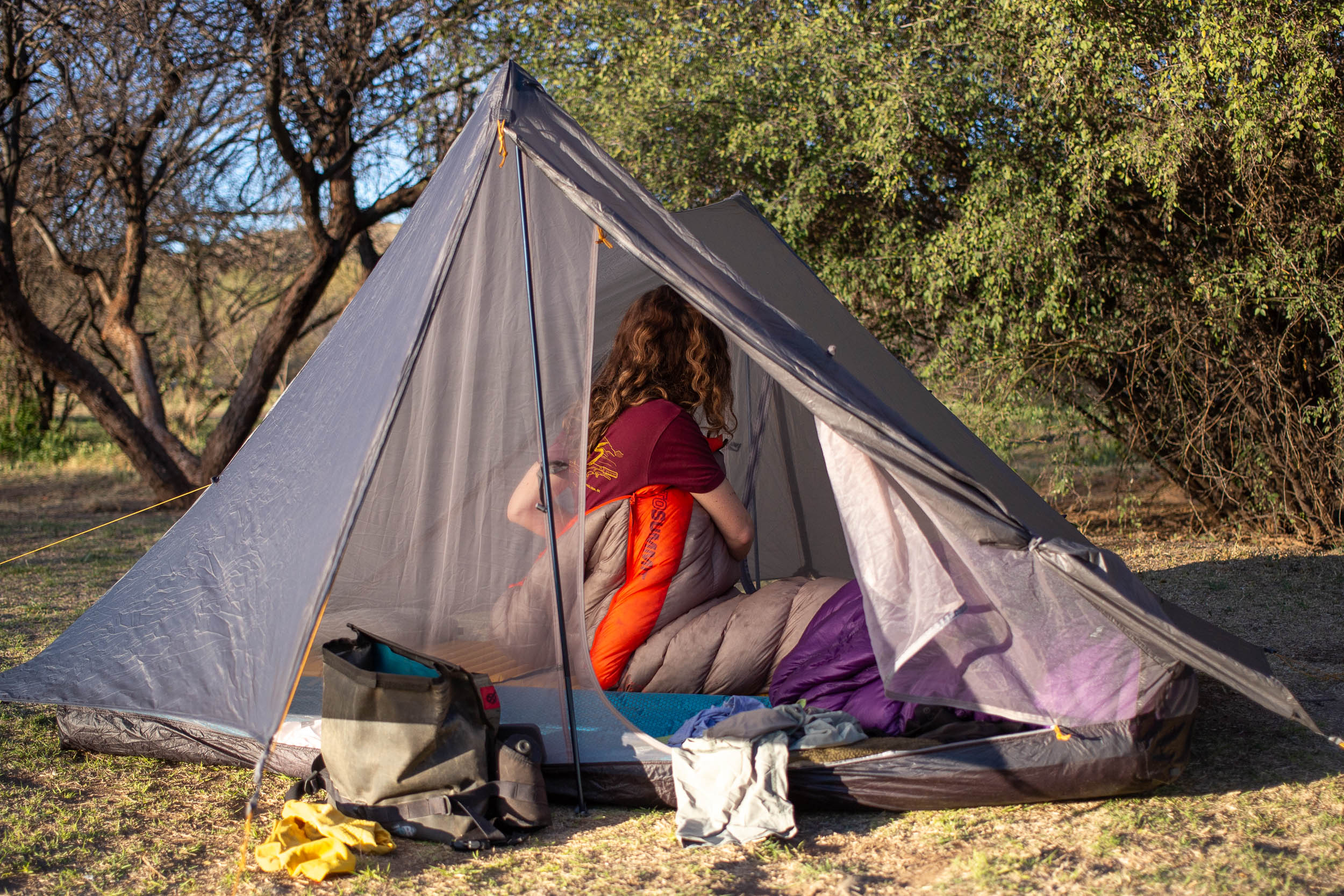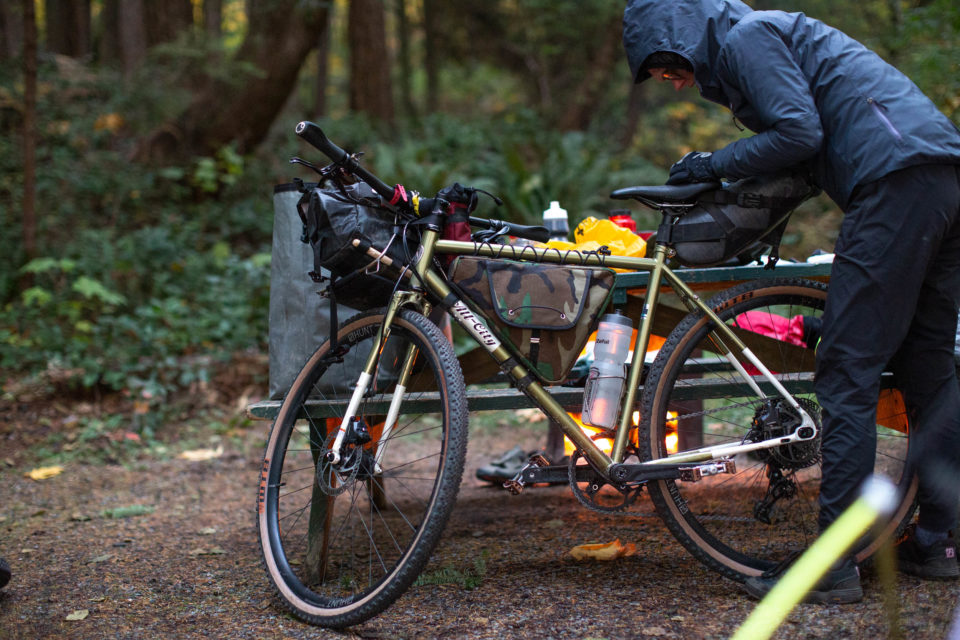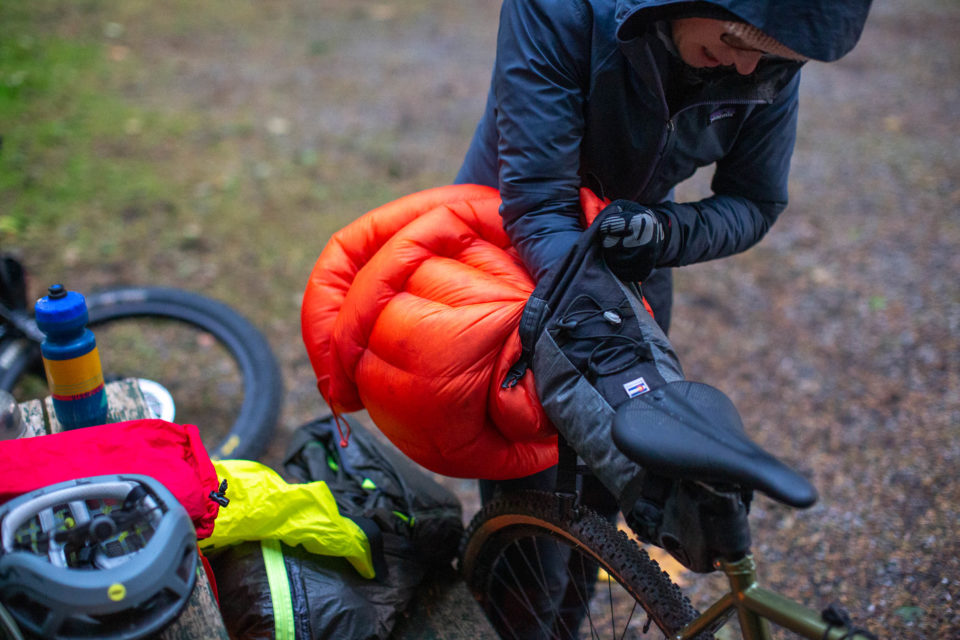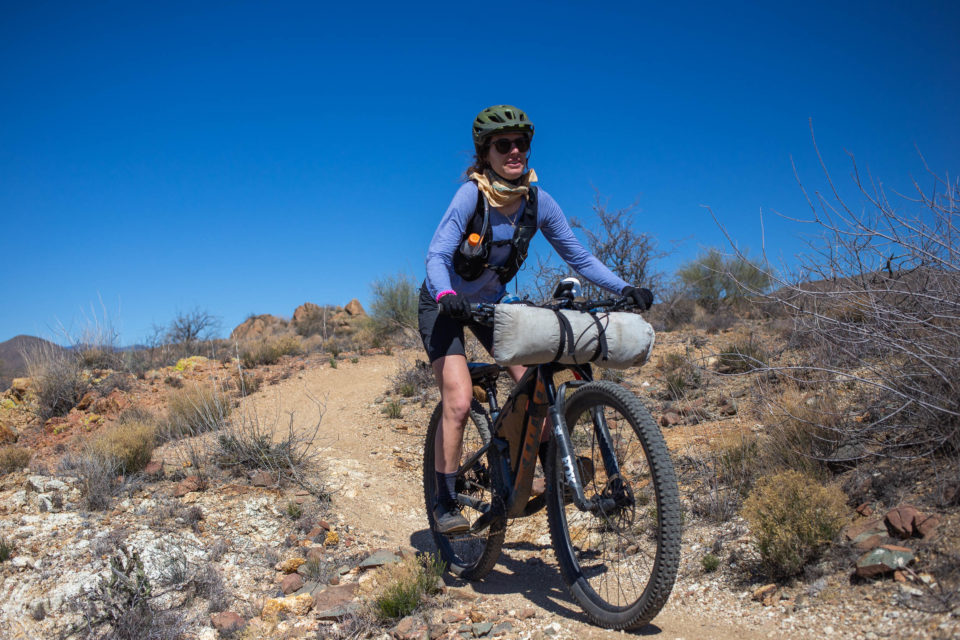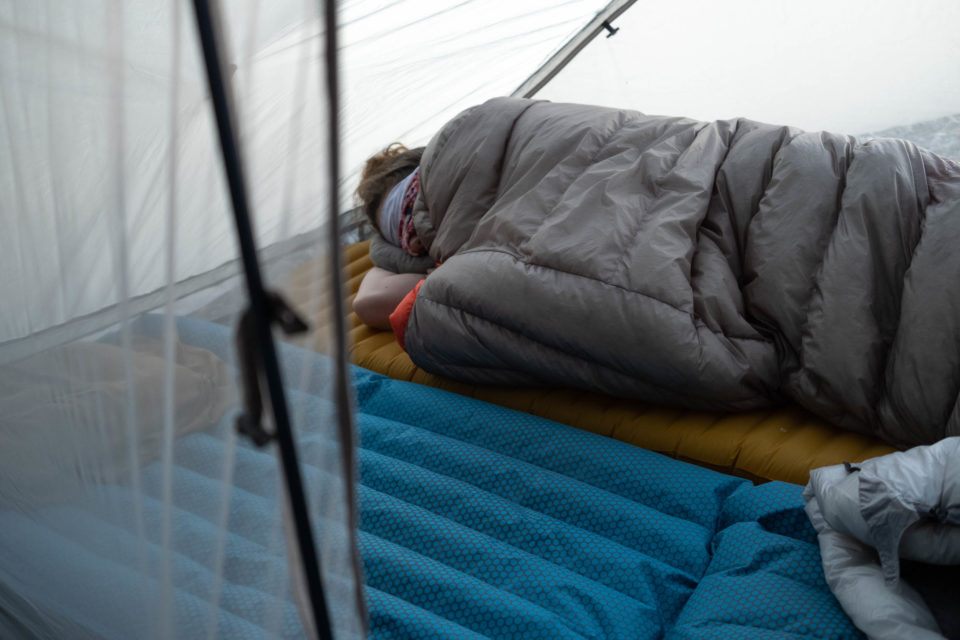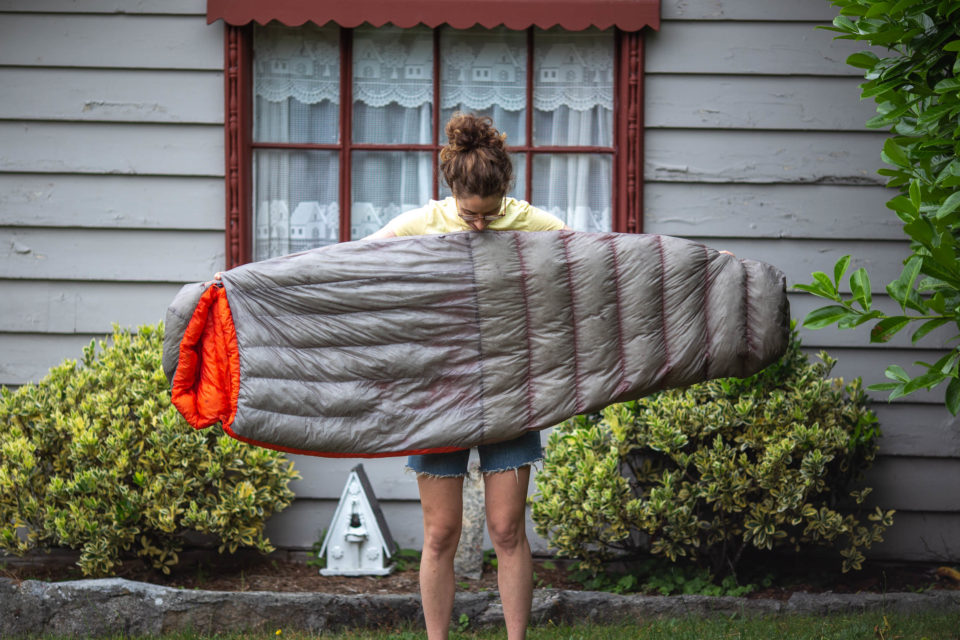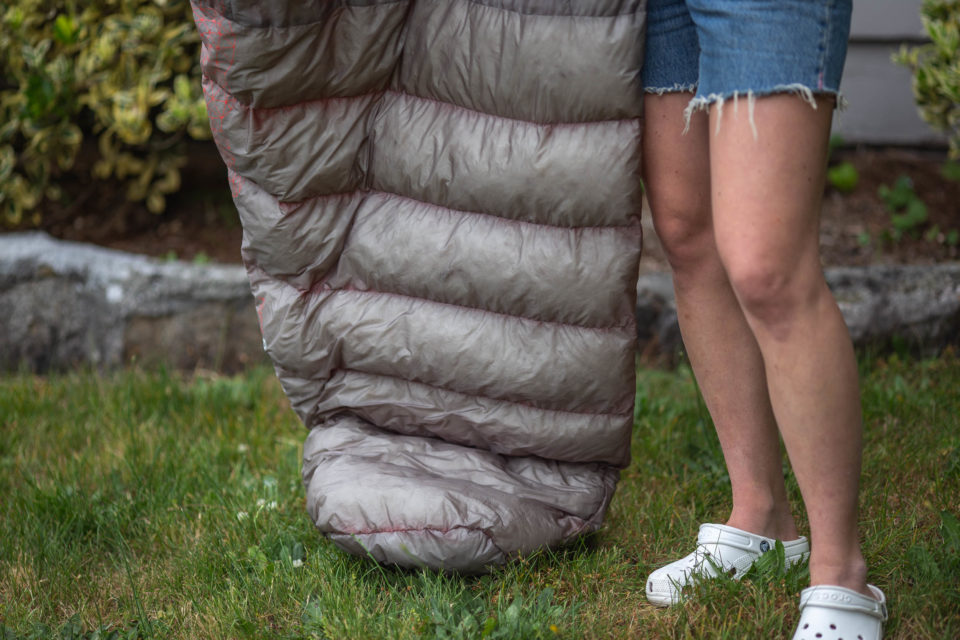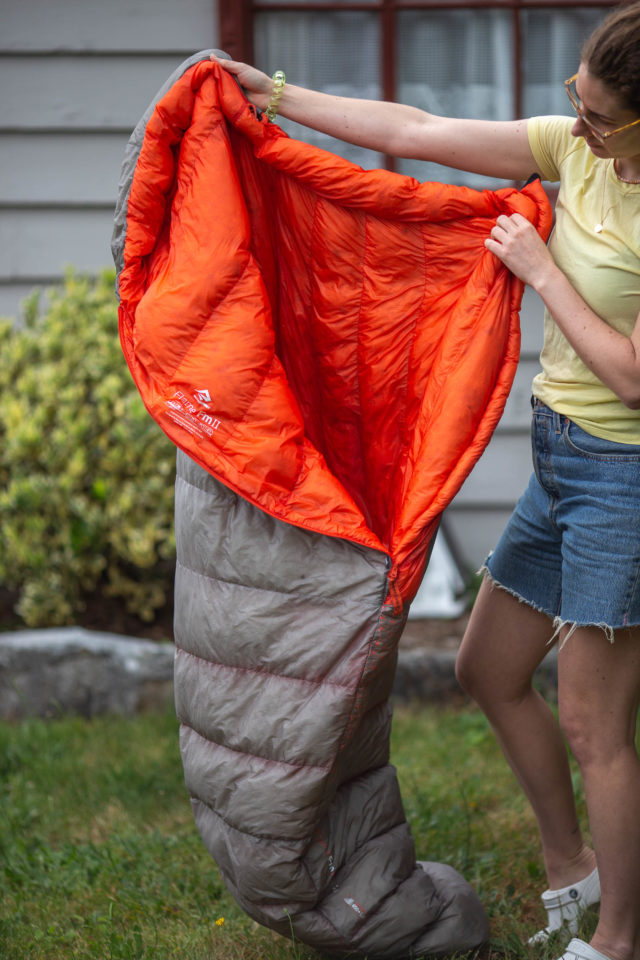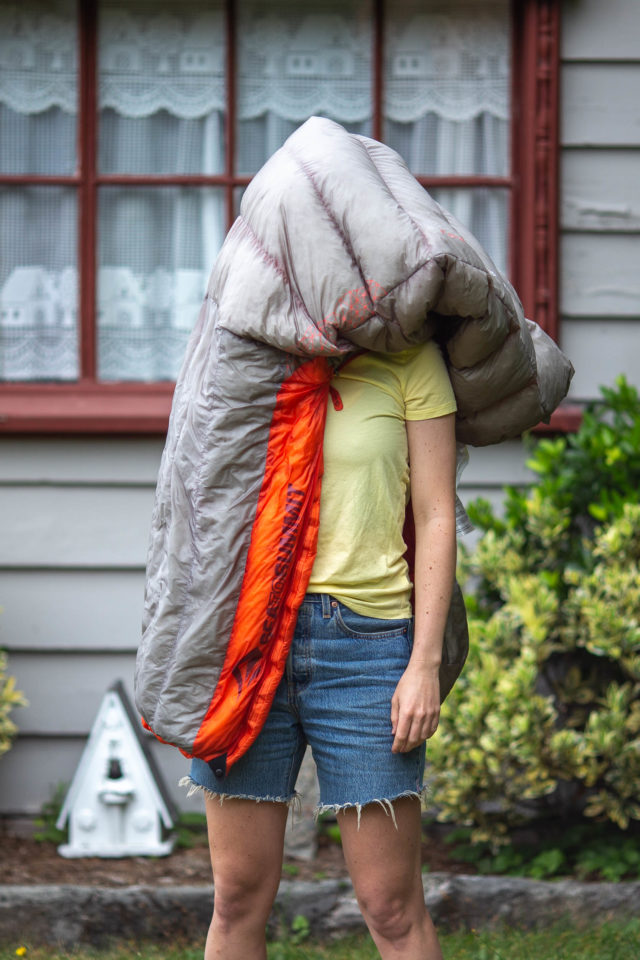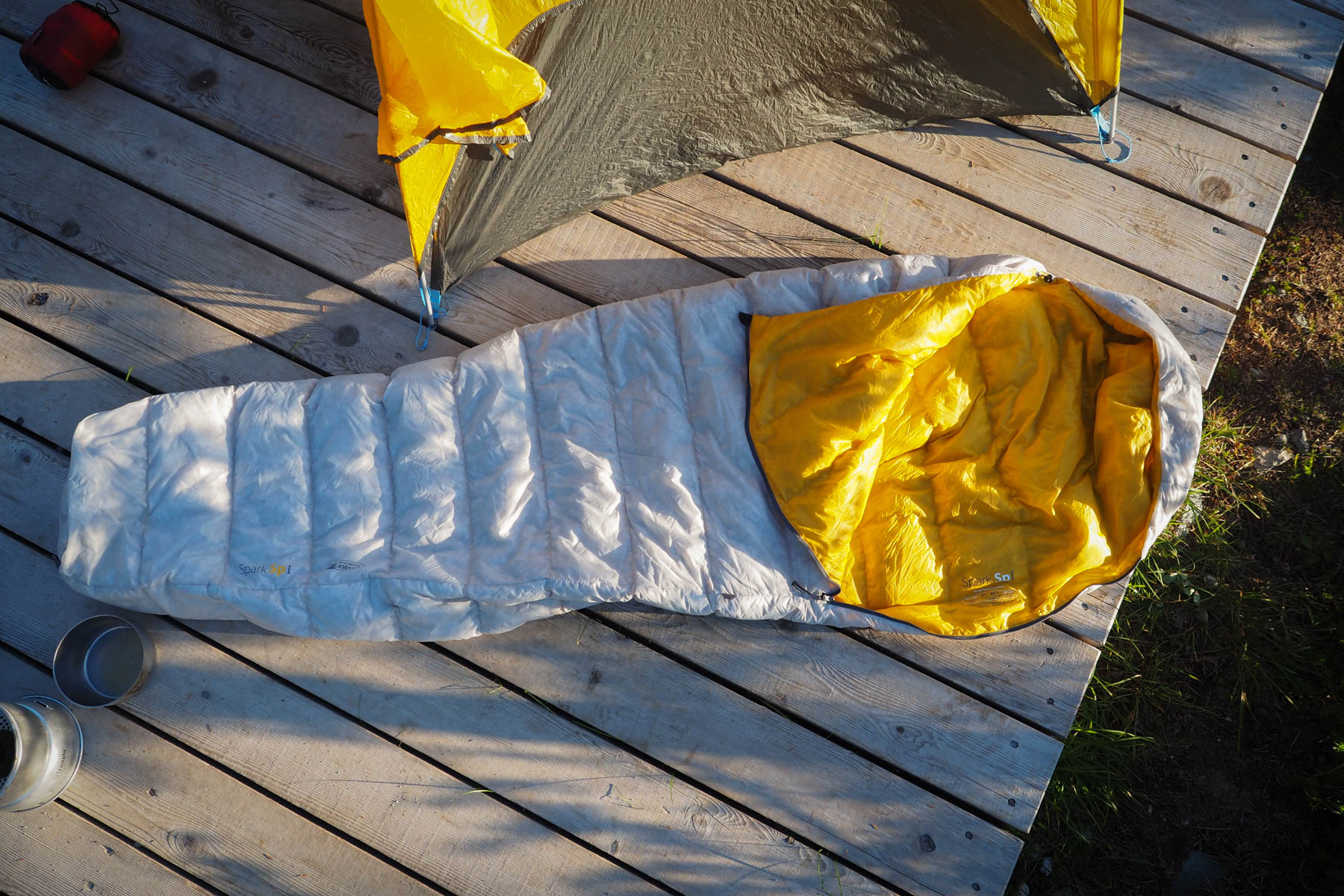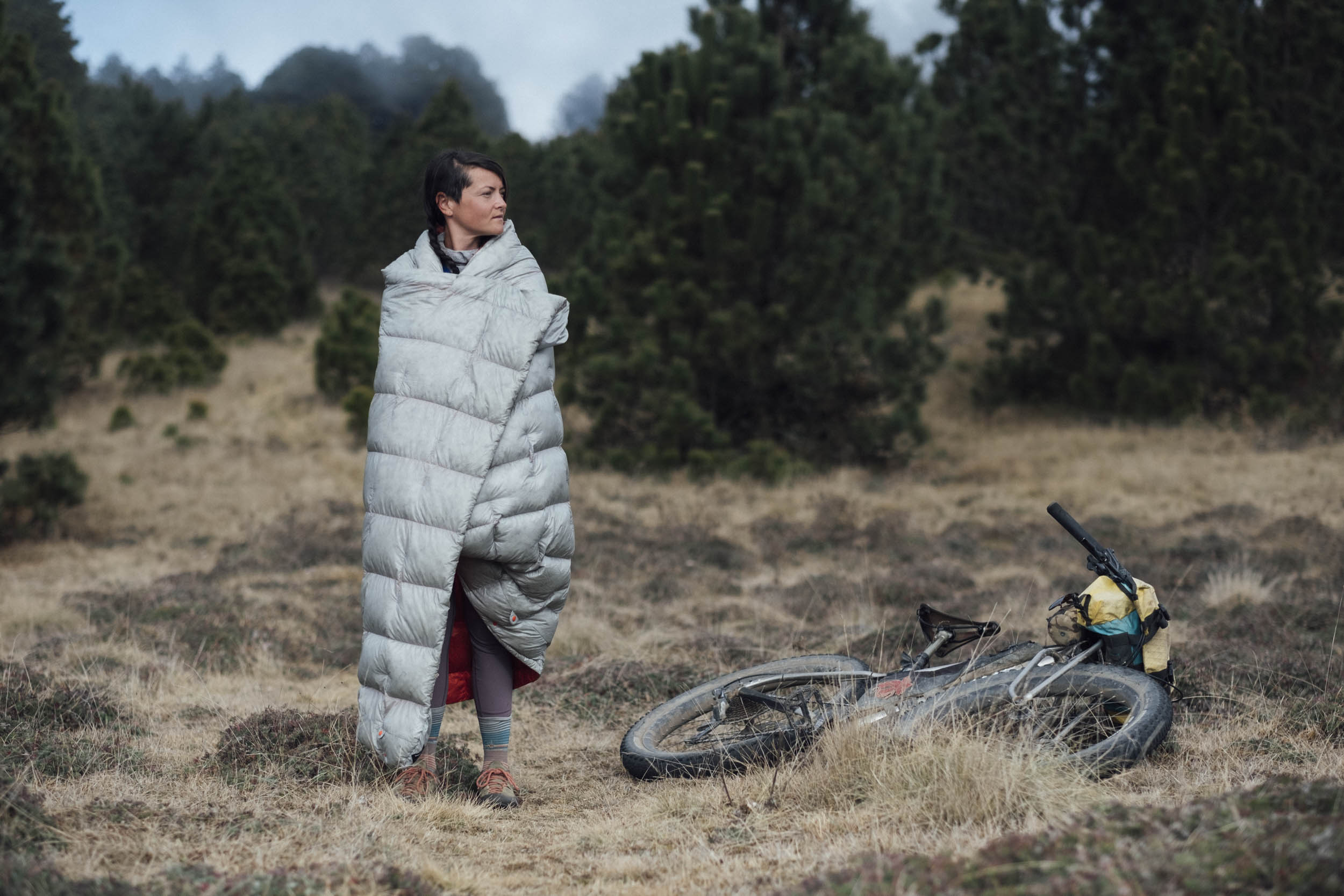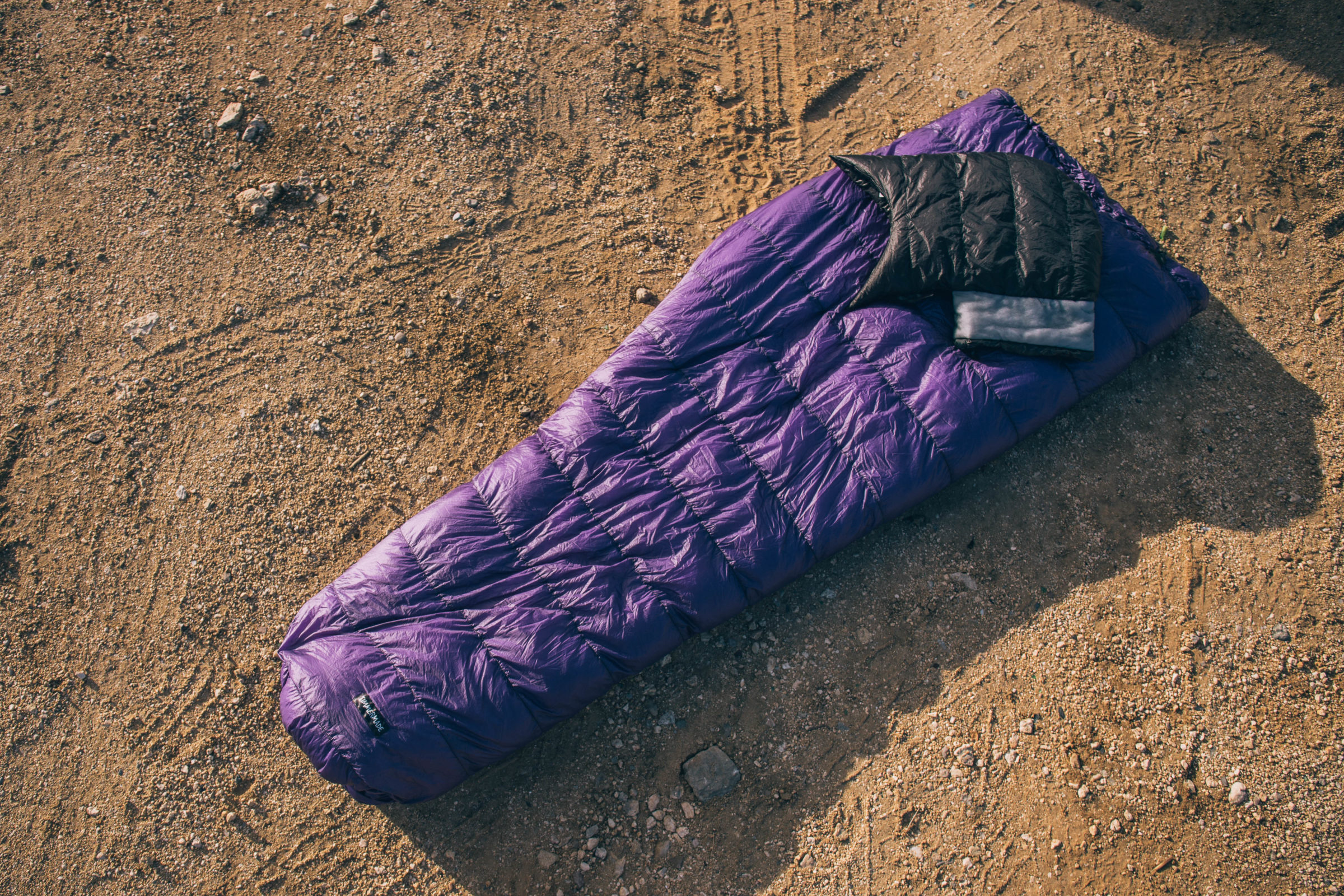Sea to Summit Flame Sleeping Bag Review: Emily’s Hunt for Sleep
Share This
The women’s-specific Sea To Summit Flame sleeping bag line-up was recently expanded to include more sizes and temperature ratings. We’ve been busy testing out the 35°F rated Flame 2 sleeping bag in a variety of conditions over the last few months. Find our review here…
Back in 2017, I reviewed the Sea to Summit Spark SPI—an impressively lightweight sleeping bag with a comfort rating of 54°F (12°C) and a total weight of just 348g. As far as warm-weather sleeping bags go, it was pretty ideal. But, as I discovered, it was easy to find its limits when the temperatures dropped.
Although she has accompanied me on a lot of bikepacking trips, my partner Emily doesn’t actually have her own sleeping bag. When Sea to Summit announced an updated line of Spark and Flame sleeping bags, I figured it was a good opportunity to test out a bag that’s warmer, still packable enough for bikepacking, and better suited for proper three-season use. After some discussion with Emily, we landed on the Flame 2. With a comfort rating of 35°F (2°C), two lengths to choose from, and weight that’s just over one pound, it seemed like it’d hit a sweet spot for everything beyond winter here in British Columbia.
According to Emily, “Over the years, I’ve made it my mission to not spend any money on camping gear. Instead, I borrow whatever Miles has had on hand. This had led to me experimenting with a variety of whacky combinations, from stupid-light quilts in cooler months, bulky winter-rated bags in July, and forgoing a sleeping pad altogether when we somehow only had one to share. Don’t even get me started about our little hammock project last summer. I’ve never truly been satisfied with my sleep system while bikepacking, which has led to some miserable mornings on what should have been pretty straightforward getaways. When it came time to get my own sleeping bag, some things I was looking for included a proper hood, not a quilt, something packable to work around my small bike frame/limited packing space, and most importantly, a comfortable temperature rating for coastal BC.”

Flames and Sparks
Sea to Summit significantly expanded their ultralight Spark sleeping bag series in 2020. Not only did they add more temperature ratings, increasing the total number of bags from three to five, but they added an entirely new women’s-specific line, the Flame Series. From ultralight liner bags rated for 55°F (12°C) to mid-winter bags for 5°F (-15°C), the Spark and Flame Series take a no-frills approach to lightweight sleeping bags. The Flame 2 is the second lightest weight bag in the new series, and is what Sea to Summit describes as a “two-season” sleeping bag—not quite warm enough for proper three-season camping but more than just a liner for warm summer nights.
Sea To Summit Flame Sleeping Bag Series
| Model | Weight | Pack Size | Price | Comfort Temp |
|---|---|---|---|---|
| Flame 1 (48°F) |
12.3 oz
350 g
|
1.6L | $339 | 48°F/9°C |
| Flame 2 (35°F) |
17.8 oz
505 g
|
2.9L | $389 | 35°F/2°C |
| Flame 3 (25°F) |
23.5 oz
665 g
|
5.3L | $489 | 25°F/-4°C |
| Flame 4 (15°F) |
31.4 oz
890 g
|
7.1L | $569 | 15°F/-10°C |
| Flame 0 (Liner) |
7.6 oz
215 g
|
0.7L | $269 | 55°F/13°C |

Both the Spark and Flame sleeping bags use Responsible Down Certified ULTRA-DRY 850+ fill-power down. The shell is made of a ultralight 10D nylon and the liner of a 7D nylon. For even more weight savings, the 50°F, 40°F, and 28°F have 1/3-length zippers, while the 18°F and 5°F have full-length side zippers. The 50°F and 40°F use a sewn-through baffle construction to save weight, the 28°F has baffles in the torso and sewn through in the leg area, and the 18°F and 5°F are fully baffled for better insulation in cold weather. A lightweight silnylon compression bag and storage cube are included with each bag. Every model is available in both a regular (up to 6’0″) and a long (up to 6’4″).
At 505 grams with a compressed volume of approximately 2.9L, the Sea to Summit Flame 2 is perfectly suited for bikepacking, taking up minimal room in your bags. For Emily, due to her smaller frame size and limited packing space, this is an important feature. On our trip down the Black Canyon Trail in Arizona this winter, Emily wanted full use of her dropper post, so opted to carry a hydration vest and a handlebar roll setup instead of struggling with a saddlebag. The Flame 2 took up about half of the capacity in the medium Revelate Designs Pronghorn dry bag (see lower left photo) she used, leaving plenty of room for some extra layers. On her gravel bike, the Wayward Riders Louise Dropper Post Harness with a 7L Ortlieb dry bag also provided plenty of room for the bag + extras. On a recent overnighter, Emily fit the sleeping bag, inflatable pillow, camp towel, and a full change of clothes inside the JPaks DropperPak.
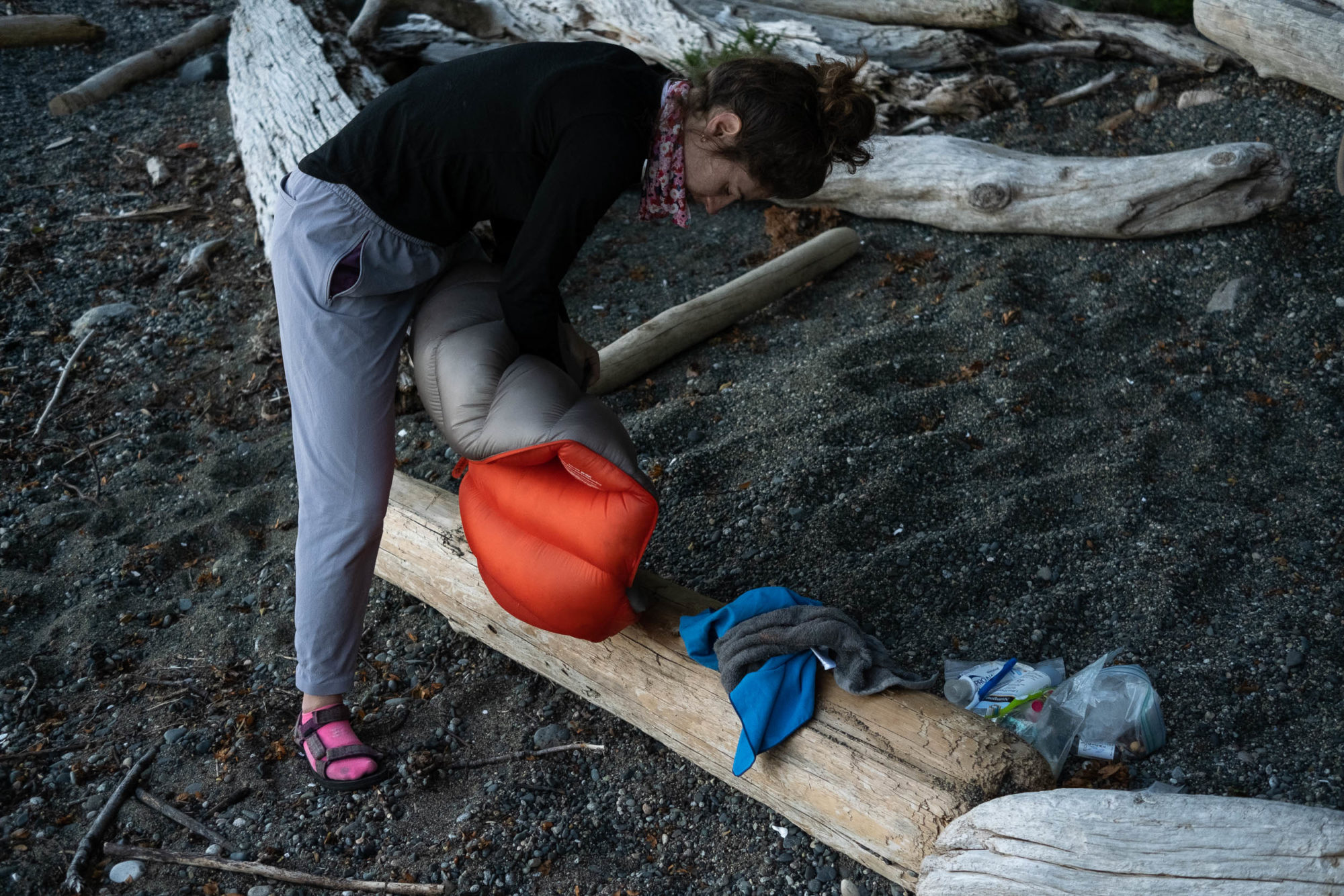
Thoughts While Sleeping
The women’s Flame sleeping bag series has a women’s-specific cut that worked well for Emily’s body type. It is narrower at the shoulders and wider between the hips and knees. According to Sea to Summit, this design allows the user to move freely throughout the night without compressing the insulation. There is also additional insulation compared to the unisex range, positioned using different body mapping for thermal performance exactly where it’s needed. With that said, the insulation shifts around quite easily and requires some shaking to distribute it on top after unpacking. Skipping this results in cold spots and small sections where there’s next to no insulation. When I asked Emily for her thoughts on the shape and functionality of the Flame 2, here’s what she had to say:
“As my first women’s-specific mummy sleeping bag, it’s hard for me to compare against bags I’ve used in the past, which have primarily been Miles’ large unisex bags. On warmer nights, I felt like I had plenty of room around my shoulders and lots of length with the hood on to not feel restricted. As someone who doesn’t normally sleep with a hood, I appreciated the width of the Flame’s hood and never felt claustrophobic. Even without a full-length zipper, I was able to open the bag up to vent things out, but on hot nights I missed the ability to open the bag fully and let my feet breathe. On cold nights (32°F/0°C or colder), I found there wasn’t enough room to tuck my knees toward my chest. While this is outside the bag’s temperature rating, I feel like I could push it into colder temperatures with some more width and the addition of a fleece liner.”
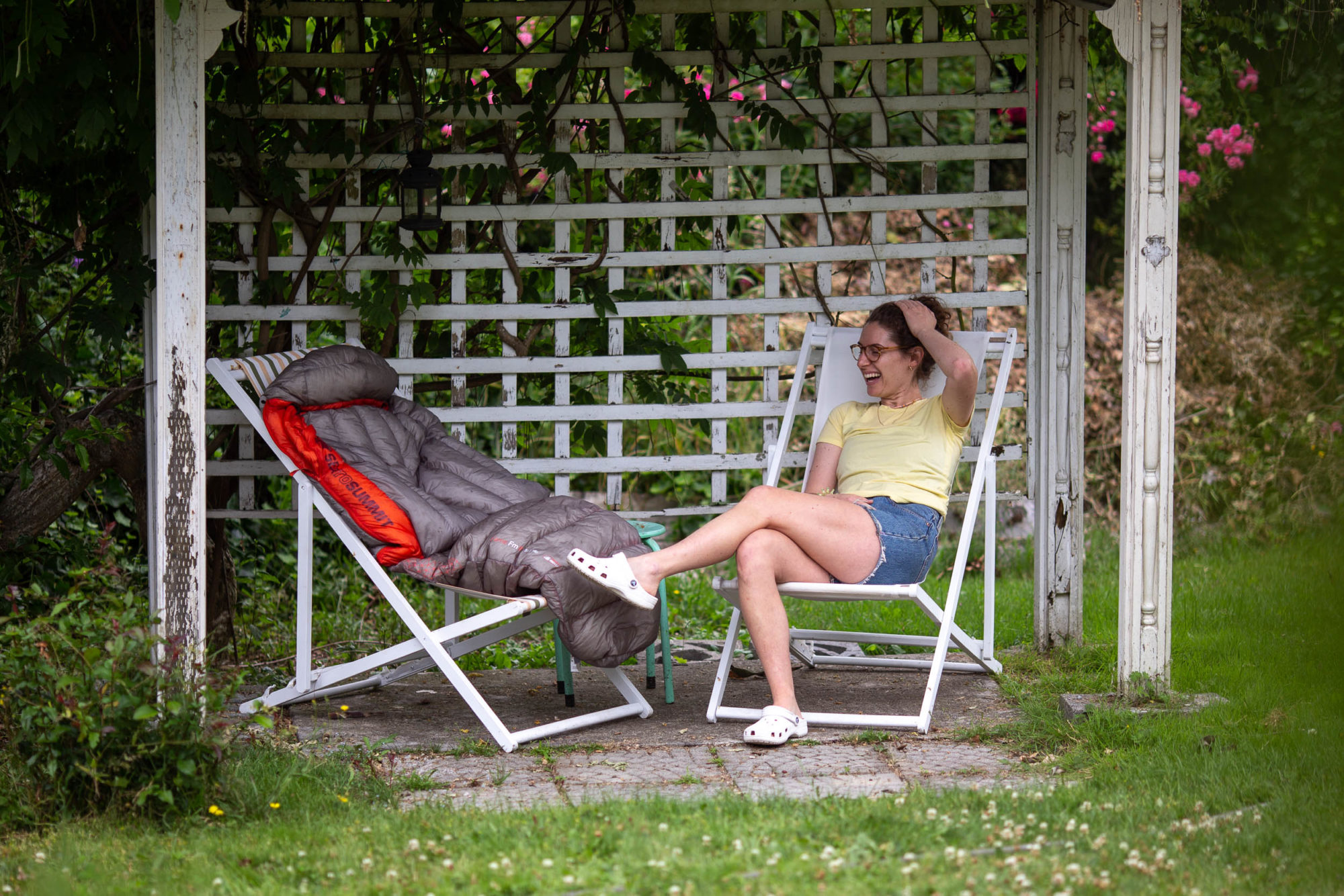
Pros
- Packs small and weighs very little
- Functional and accurate temperature range
- Responsible Down Standard (RDS) certified down
- Minimalist design without sacrificing key features
- Not showing any signs of early wear after a year of use
Cons
- Expensive
- Pear-shaped fit won’t work for all body types
- Potential for cold spots as down shifts around
- Size Tested: Regular
- Material: 10-Denier Nylon
- Weight: 490 grams (with stuff sack)
- Place of Manufacture: China
- Price: $389 USD
- Manufacturer’s Details: SeaToSummit.com
Wrap Up
Emily: As I continue to bikepack more often and slowly start to carry more of my own gear, I’m beginning to understand why Miles gets so excited about saving a few grams. As a shorter rider and with less packing space at my disposal, having a sleeping bag that packs down so small has been a game-changer. I would have gone on using whatever bag Miles wasn’t using, but having a packable and functionally warm bag all to myself has been encouraging. A full-length zipper and roomier fit might allow me to stretch the comfort rating on either end, but I think the Flame 2 strikes a good balance between comfort and pack size. As for my hunt for sleep, having my own personal bag brings some sense of familiarity while camping, allowing me to discover what works and what doesn’t. Do I sleep soundly for eight hours every night while bikepacking? Heck no. But, maybe some day.
Related Content
Make sure to dig into these related articles for more info...
Please keep the conversation civil, constructive, and inclusive, or your comment will be removed.






